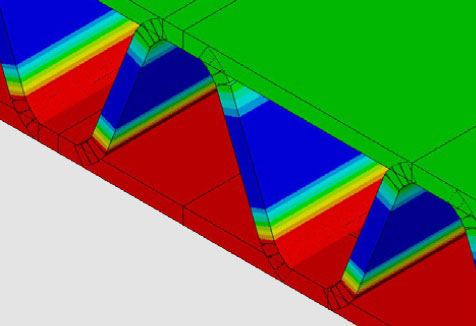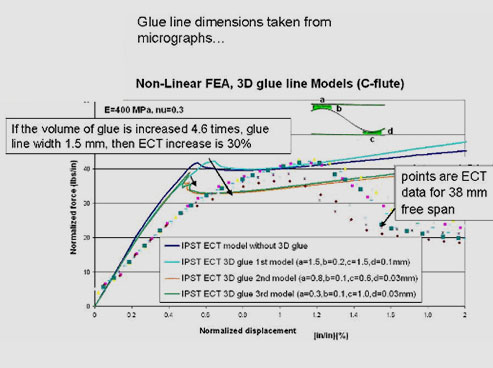The compressive index of a material, the failure load per width/basis weight increase with sheet density in much the same way as the tensile index. Hence fibre characteristics that contribute to density and flexural modulus of the sheet and the resilience of the fibres themselves are likely contributing factors. These properties, when applied to fluting media and liners in corrugating boards, provide an important basis for the prediction of the compressive strength of the fabricated container.
Ring crush data fall well below STFI edgewise compressive strength when both are measured on the same board. This is because the ring crush method does not completely eliminate buckling of the specimen; especially at low basis weights, a buckling mode of failure increasingly replaces the crushing mode. The chief virtue of the STFI edgewise compressive strength test is that for all practical purposes, buckling is eliminated. A pure crushing mode of failure is thus assured. This is achieved mainly by a very small sample span, 0.7 mm, and by specimen clamps machined to very close tolerances.
- USA
- Some are using only RCT
- Other only SCT
- Some both, SCT on low basis weight and RCT on high basis weight
- Europe
- SCT dominating
- Asia
- RCT almost only
- Australia
- Moving from RCT to SCT
Did You Know? the SCT test method was developed by Christer Fellers in the late 1970’s as part of his PhD at S.T.F.I
Corrugated Board Testing
The maximum compressive load a container can bear over a given length of time, under given environmental and distribution conditions without failing is directly correlated to it's stacking strength. The ability to carry a top load is affected by the structure of the container, the environment it encounters, the ability of the inner product and the dividers, corner posts, etc. to sustain the load. For RSC Box Style 0201) CS can be approximated using Mackee's formula below:



BCT is the CS and RCT is the deckle ring crush and DMD and DCD being beard flexural stiffness. Alpha and delta are constants depending on box type and loading conditions.
This formula is only valid when the ratio of perimeter and depth of the box is less than 7. For higher ratios we use nonlinear modelling and/or Finite Element Analysis to predict failure mode under progressive top loading.

